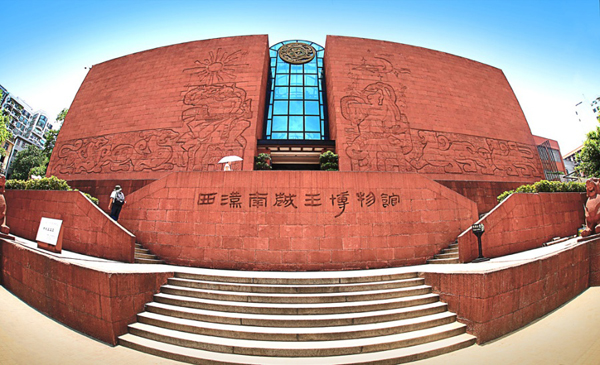Nan Yue King Tomb
The Museum of the Mausoleum of the Nanyue King, located in Guangzhou, is a Western Han Dynasty (206BC-24AD) imperial tomb. Known for its incredible state of preservation, the tomb was built for the burial of Zhao Mo, the second king of the Nanyue Kingdom.
The tomb was discovered in 1983, when workers were leveling Elephant Hill to construct a hotel. The museum was opened in 1988. The museum occupies an area of over 14,000 square meters and has 10 exhibition halls. The tome is 11 meters long and over 12 meters wide. It is made up of 750 large stones covered with colorful murals, the only tomb ever discovered from the Han Dynasty to have murals. There are seven chambers including; a front chamber, east and west wings, burial chamber, east and west side chambers and a storage chamber. Over 1,000 artifacts were discovered in the tomb.
Artifacts
Over 1,000 artifacts were discovered in the tomb along with remains of 15 courtiers who were buried
alive with the king. The precious burial objects buried with the king included; musical instruments,
jewelry, weapons, and cooking utensils. All were made of precious material with exceptional artistry.
Two artifacts of note are the imperial seal, and the jade suit. The imperial seal is the oldest imperial
seal ever discovered in a Chinese tomb. It announced that the tomb’s owner was “Emperor Wen”.
The jade suit was a burial suit made up of 2,291 pieces of jade tied together with red silk.
Jade suits have been found tied together by gold, silver, or copper, but this is the first
example of silk being used. The suit was made to encase the king’s body, because it was
believed that jade prevented decay. Along with Chinese made artifacts, there is evidence
of Guangzhou’s importance as a trading port along the Ancient Marine Silk Road by the
number of artifacts made abroad. There were artifacts made in Africa, Western Asia,
and Southeast Asia found in the tomb.




